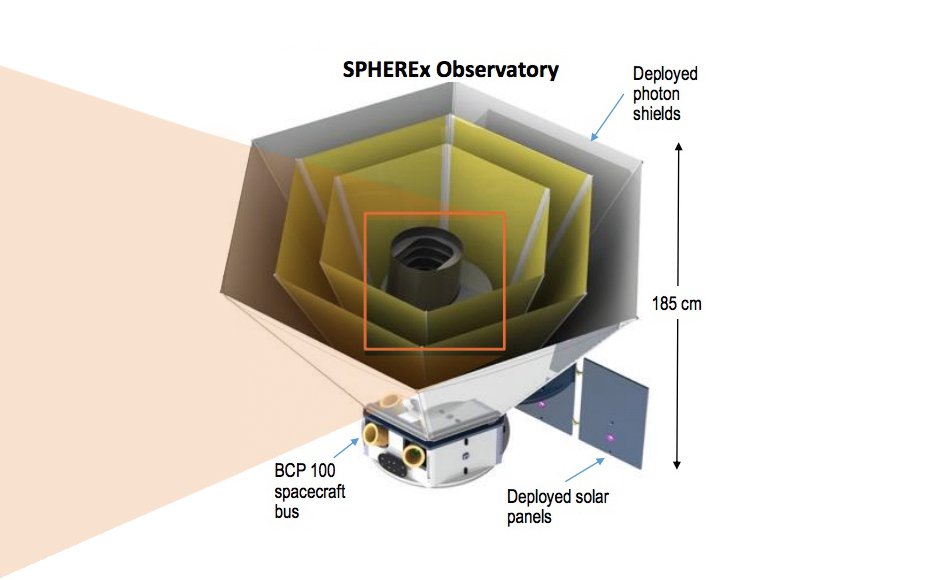Context:
NASA successfully launched its new space telescope, SPHEREx, aboard a SpaceX Falcon 9 rocket on February 28, 2025.The mission will last for two years and aims to help scientists delve deeper into the formation of the universe, galaxy growth, and the identification of life-forming molecules in the Milky Way galaxy.
Key Works of SPHEREx:
1. Most Colourful Map of the Cosmos: SPHEREx will create a highly detailed and comprehensive map of the universe, detecting both optical and infrared light. This will allow scientists to gain an unprecedented view of the farthest reaches of space, uncovering information about star formation and galactic structures, offering insights into how galaxies evolve over time.
2. Shedding Light on Cosmic Inflation: One of SPHEREx's primary goals is to measure cosmic inflation—a critical phenomenon that occurred about 14 billion years ago. By measuring the 3D positions of 450 million galaxies, the telescope will help scientists understand the universe's expansion and its early evolution, shedding light on its initial growth stages.
3. Exploring the Milky Way for Life-Forming Molecules: SPHEREx will focus on identifying water- and life-forming molecules in the Milky Way galaxy. This extensive study will provide scientists with a comprehensive census of these essential molecules, offering clues about the origins of life on Earth and revealing the conditions that may be necessary for life to exist elsewhere in the universe.

Other key missions of NASA:
About Hubble Space Telescope (HST)
- Launch Date: April 24, 1990
- Key Works:
- Hubble provided the first clear images of distant galaxies and nebulae, helping astronomers understand the structure and age of the universe.
- It discovered that the universe is expanding at an accelerated rate, contributing significantly to the discovery of dark energy.
- Hubble's observations of supernovae and galaxy clusters have provided key insights into the cosmic distance scale and the universe's expansion.
About James Webb Space Telescope (JWST)
- Launch Date: December 25, 2021
- Key Works:
- JWST’s infrared capability allows it to see deeper into space and time than Hubble, providing insights into the formation of the first galaxies and stars in the early universe.
- The telescope is designed to study the origins of life by investigating the atmospheres of exoplanets, seeking signs of water, oxygen, and methane—key molecules for life.
- Its exploration of the Epoch of Reionization will help understand how the universe transitioned from being opaque to transparent about 13 billion years ago.
Conclusion:
SPHEREx is poised to make groundbreaking contributions to our understanding of the cosmos. By exploring the universe in more detail than ever before, the mission will help uncover the mysteries of cosmic inflation, galaxy formation, and the conditions required for life, bringing humanity closer to answering some of the most fundamental questions about the universe and life itself.







